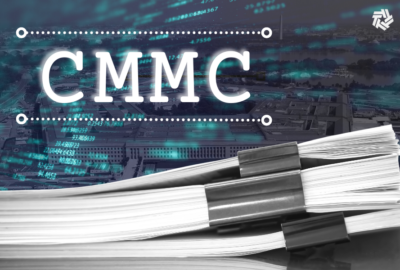What’s next for federal unions?
Jeff Neal, former chief human capital officer at DHS, ponders how the new administration will handle federal employee unions.
This column was originally published on Jeff Neal’s blog, ChiefHRO.com, and was republished here with permission from the author.
The transition from divided government to a single party controlling the House, Senate and White House is likely to result in a renewed interest in changing the laws, rules and regulations that govern the civil service. I plan to write several posts on what might or might not happen in civil service reform, starting with collective bargaining and the way it works in the federal government.
It is safe to say that unions have become a more partisan issue. Democrats generally like them, Republicans generally do not. It is likely we will see some changes that affect both the representational aspects of labor relations and the institutional issues that affect the unions themselves.
The institutional issues relate to how unions get the resources they need to effectively represent employees. The two biggest factors are official time and dues withholding. In recent years there have been proposals that would eliminate the ability of employees to sign a dues withholding form to have dues taken from their pay. The alternative would be to use allotments or to have people pay the unions directly. There are a lot of reasons why proponents think it is a good idea, but the bottom line is it would make it harder for unions to get money.
The second institutional issue is also a representational issue — official time. Official time is the time union stewards and other officials use for representational issues. It is time on the clock and the taxpayers foot the bill. OPM reports the cost at more than $150 million per year. Because official time is typically under-reported, the actual cost is likely higher than that. Opponents of that spending argue it is a subsidy for unions. Proponents of official time say it provides enough benefits to agencies that the government gets more than it pays. They also argue that unions in government are required by law to represent people who are in the bargaining unit but who do not pay dues.
I expect to see attempts to either eliminate or substantially weaken official time and to make it harder for unions to collect dues. Whether or not such proposals are passed will depend on how much of a fight supporters of collective bargaining (particularly in the Senate) are willing to put up.
One important thing to remember about collective bargaining is that it is considered by industrialized nations to be a fundamental right. We are so programmed in this town to see everything through the lens of politics that sometimes we lose sight of that. In 1948, the United Nations adopted the Universal Declaration of Human Rights. The United States was among the greatest proponents of the declaration, with former first lady Eleanor Roosevelt playing a leading role in writing it. Article 23 of the UDHR says, “Everyone has the right to form and to join trade unions for the protection of his interests.” Roosevelt said in her “My Day” column “The United States delegation considered that the right to form and join trade unions was an essential element of freedom.”
Rather than looking at the politics of the current state of labor relations in government, I believe the Congress should look at alternative constructs that would guarantee the basic right of employees to form unions, but also would incentivize those unions to be more effective and to operate more with dues than with government subsidies. That would require a substantial rethinking of our approach to collective bargaining. For example, one of the basic tenets of collective bargaining in the U.S. is “exclusive representation.” In exclusive representation, the employees elect a single union to represent their interests. Once elected, the union tends to be there forever unless another union attempts to “raid” the unit through a new election. The limits on such elections make it uncommon to see a union replaced with a new one.
When the Homeland Security Department was looking at options for collective bargaining for transportation security officers, we had the flexibility under the Aviation and Transportation Security Act to come up with any framework we thought would work. One option we seriously considered (that was ultimately rejected by the secretary and the White House) was a non-exclusive representation arrangement. It would have allowed individual employees to join a union of their choice (or no union), subject to that union having a showing of 10 percent or more members of the bargaining unit. A showing would be demonstrated by paying dues rather than by an election. If more than one union had 10 percent, they could also represent employees. During collective bargaining, the unions would jointly bargain with management to establish a single contract that would cover every union. If a union fell below 10 percent, it would no longer be able to bargain for employees. Our intent in developing the construct was that unions would basically be in a free market competing for members, with the result being more engaged unions that provided better services to the employees they represent. It would allow them to choose their union based on how that union was meeting members’ needs and getting results. Ineffective unions would be out and effective unions would grow. Employees who chose not to join a union would not have union representation at all.
The arrangement would have been dramatically different from traditional American labor relations. It is not, however, a wild idea that came from nowhere. It was based on an approach that is widely used outside North America (including many of our allies) and would have provided a testing ground for a new approach that might have the benefit of reducing the government’s cost of bargaining, while providing employees with stronger and more effective unions. It would also have eliminated the “free rider” problem that unions representing government employees face. Because the federal labor relations statute (5 USC Chapter 71) requires the union to represent employees who do not pay dues, unions spend a lot of their time representing people who pay nothing. That is one of the reasons “official time” is required.
Rather than approaching labor relations reform solely in the context of politics or the traditional “us vs. them” adversarial approach that many labor relations specialists and union officials seem so wedded to, we should try to find an approach that works for the agencies, works for the employees, and works for the taxpayers. This is one approach that might do all three while protecting a basic right.
Jeff Neal is a senior vice president for ICF and founder of the blog, ChiefHRO.com. Before coming to ICF, Neal was the chief human capital officer at the Department of Homeland Security and the chief human resources officer at the Defense Logistics Agency.
Copyright © 2025 Federal News Network. All rights reserved. This website is not intended for users located within the European Economic Area.






